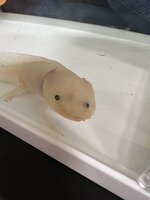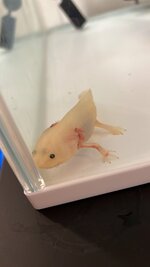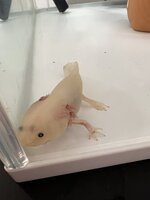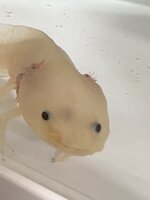a menos que o tanque de quarentena seja ciclado ou 100% de água trocada, é pior do que estar no tanque original, pois compostos de nitrogênio, ou seja, amônia, etc., podem se acumular rapidamente.
enquanto ela está sendo tratada, é mais fácil enxugá-la para que a água possa ser trocada diariamente e quaisquer medicamentos etc. possam ser administrados com segurança.
certifique-se de que a água seja desclorada antes de usar e que a água seja mantida fria, ou seja, 15°C ou menos. troque a água diariamente alimentando à noite e trocando pela manhã.
se holtfreters for usado, é mais fácil fazê-lo em um lote grande e usá-lo conforme necessário.
certifique-se de que uma pedra de ar é usada para manter a água oxigenada.
se não conseguir manter a água gelada então ela terá que ser refrigerada com monitoramento e a geladeira regulada para não inferior a 4°c.
os axolotes são animais de água fria e, embora um axolote saudável lide com 21°C, é muito quente para um axolote doente. ao contrário da maioria dos animais, os axolotes curam melhor em temperaturas mais frias.




